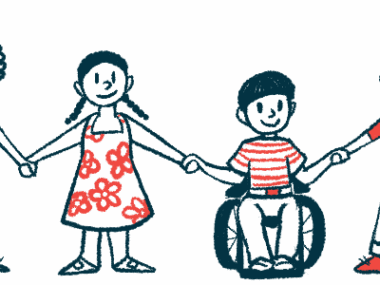New study IDs risk factors for major artery-related events in vEDS
Men and those with high blood pressure and certain facial features at risk
Written by |

Being male and having certain facial features, high blood pressure, and some disease-causing mutations all are risk factors for the occurrence of major blood-vessel-related events and/or an early age at the time of their onset among people with vascular Ehlers-Danlos syndrome (vEDS), a new study of Dutch patients found.
Among such major events are aneurysms, which are bulges in blood vessels caused by weakness in the vessel wall, and arterial dissections, or tears, according to the researchers.
Based on these findings, and “because of the great variability in type and frequency of surveillance in current daily practice, it is important to create guidelines for the management and surveillance of individuals with vEDS,” the researchers wrote.
Their study, “Vascular Ehlers-Danlos Syndrome: A Comprehensive Natural History Study in a Dutch National Cohort of 142 Patients,” was published in Circulation: Genomic and Precision Medicine.
Over half of patients in Dutch study had disease-related major event
Ehlers-Danlos syndrome comprises a group of genetic disorders affecting the body’s connective tissue, which provides structure to joints, skin, blood vessels, and other tissues and organs.
In addition to the overly mobile joints and unusually thin, stretchy skin that are the typical hallmarks of the condition, vEDS is characterized by fragile arteries and internal organs. The disease is usually caused by mutations in the COL3A1 gene, leading to defects in collagen, an essential structural protein in connective tissue.
In vEDS, the fact that arterial tearing is difficult to predict makes patient management particularly challenging. Therefore, it is crucial to know more about the disease, according to researchers.
That need led this team of researchers, from the Netherlands, to analyze 142 patients with vEDS, from 70 families. About a third (46 patients) were the first person with vEDS in their family, and thus were called index patients.
The patients’ median age at genetic diagnosis was 41 years, and patients were included in the study after a median of three years of follow-up. The main reason for referral for testing of index patients was an aneurysm or dissection (65.2%), followed by facial signs or other features suggestive of vEDS (14.9%).
Overall, 52% of the patients experienced a disease-related major event, occurring at a median age of 41, which included aneurysms and dissections of the aorta, the largest artery of the body. Men were 3.61 times more likely than women to experience a major event and were significantly younger age when it occurred.
Specifically, men were 3.7 times more likely than women to have an aneurysm in the aorta, as well as 7.7 times more likely to have a collapsed lung, known as a pneumothorax.
Other reported major events included aneurysm or dissection outside the aorta (13% for both), abdominal complications like perforation of the stomach and intestines (6%), and brain complications including stroke and aneurysm (7%). A stroke happens when blood flow to part of the brain is cut off.
Findings could lead to better guidelines for treating vEDS, researchers say
Facial features highly suggestive of vEDS, meaning five or more physical signs of the condition, were present in about half of the patients. Although having a disease-related major event was not associated with the presence of such features, patients who had them developed the first major event at a younger age.
“The correlation between the incidence of major events and an appearance highly suggestive of vEDS has not been described before in vEDS,” the researchers wrote, adding that “caregivers should be aware of this increased risk in these individuals.”
In addition, patients with high blood pressure, clinically known as hypertension, were younger when they had a major event than were those with normal blood pressure.
“Therefore,” the scientists noted, “adequate management of blood pressure is highly recommended.”
Finally, patients with disease-causing mutations in the COL3A1 gene causing a glycine substitution, an amino acid — the building blocks of proteins — had their first major event at a significantly younger age compared with those with other types of mutations.
This national multicenter cohort study of Dutch individuals with vEDS provides a valuable basis for improving guidelines for the diagnosing, follow-up, and treatment of individuals with vEDS.
Overall, 15 patients died, 10 of whom were index patients. The median age at death was 43 years for index patients and 65 years for relatives. Six index patients and two relatives died due to vEDS-related vascular complications, particularly aortic dissection. Six patients died before vEDS was diagnosed.
“This national multicenter cohort study of Dutch individuals with vEDS provides a valuable basis for improving guidelines for the diagnosing, follow-up, and treatment of individuals with vEDS,” the researchers concluded.
According to them, “it is important to create an international consensus statement for the management and surveillance of individuals with vEDS. The collaboration of vEDS expert teams is essential in the creation of such a consensus statement.”
This “should be created by using the merged … data of different vEDS cohorts [groups] from all over the world,” they added.







